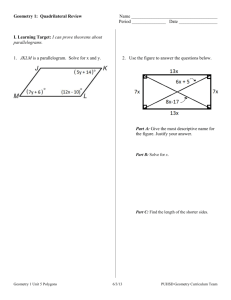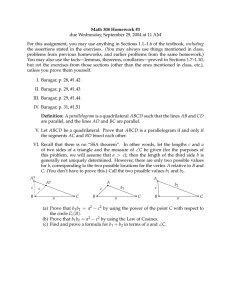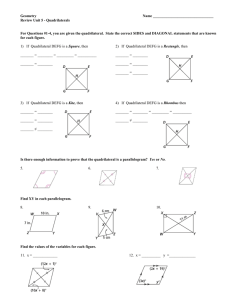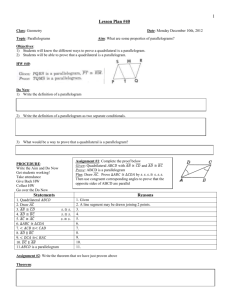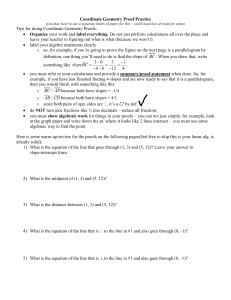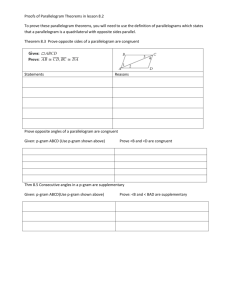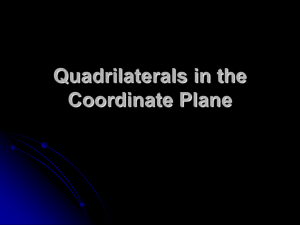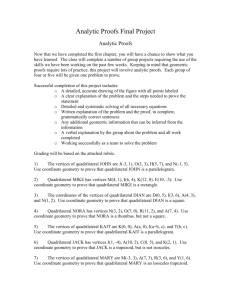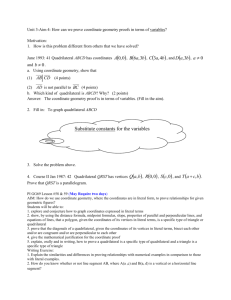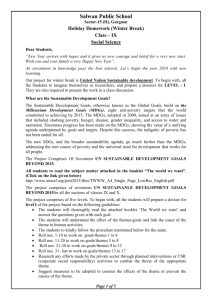Coordinate Proof Review 6 Stations
advertisement
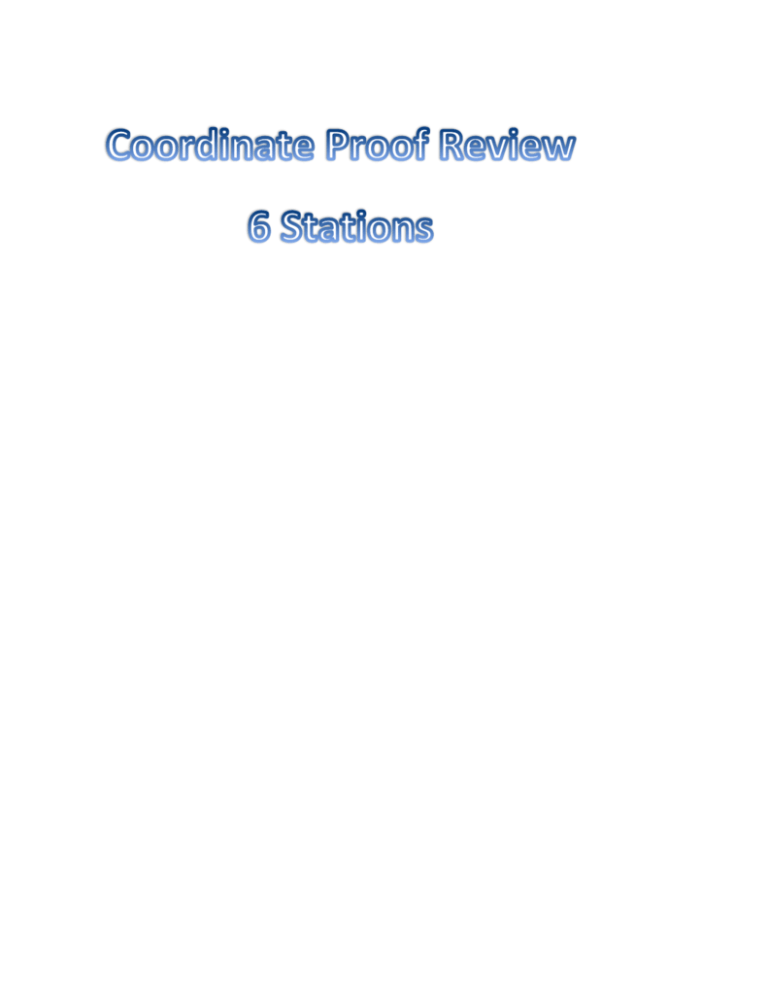
Station #1 Name _____________________ 1. Station #2 Name _____________________ 1. Quadrilateral QRST has vertices Q(a, b), R(0, 0), S(c, 0), and T (a + c, b). Prove that QRST is a parallelogram. **See Backside Station 2 continued… 1. The coordinates of quadrilateral ABCD are A(-1, -5), B(8, 2), C(11, 13), and D(2, 6). Using coordinate geometry, prove that quadrilateral ABCD is a rhombus. Station #3 Name ________________________ 1. The coordinates of the vertices of parallelogram ABCD are A(-3, 2), B(-2, -1), C(4, 1), and D(3, 4). The slopes of which line segments could be calculated to show that ABCD is a rectangle? a. ̅̅̅̅ 𝐴𝐵 and ̅̅̅̅ 𝐷𝐶 b. ̅̅̅̅ 𝐴𝐵 and ̅̅̅̅ 𝐵𝐶 c. ̅̅̅̅ 𝐴𝐷 and ̅̅̅̅ 𝐵𝐶 d. ̅̅̅̅ 𝐴𝐶 and ̅̅̅̅ 𝐵𝐷 **See Backside Station #4 Name ________________________ 1. a. Quadrilateral PAUL has coordinates P(1, 1), A(2, -1), U(-2, -3), and L(-3, -1). Prove that PAUL is a rectangle. b. Prove that Ryan is not a square. Station 3 continued… 2. Station #5 Name ______________________ Quadrilateral LACY has vertices L(-5, 3), A(-2, 5), C(0, 4), and Y(-6, 0). a. Prove that LACY is a trapezoid. b. Prove that LACY is not an isosceles trapezoid. Station #6 Given: ∆ABC with vertices A(1, 2), B(7, 0), and C(3, -2). Prove: ∆ABC is an isosceles right triangle Name ____________________
